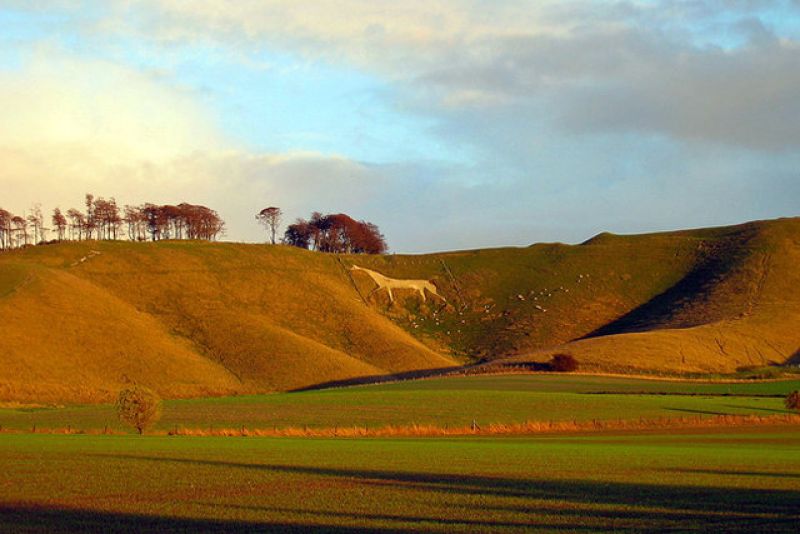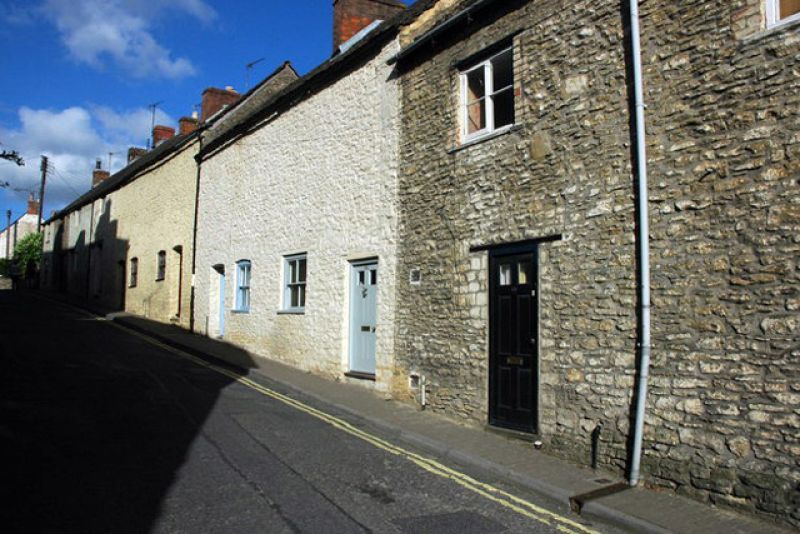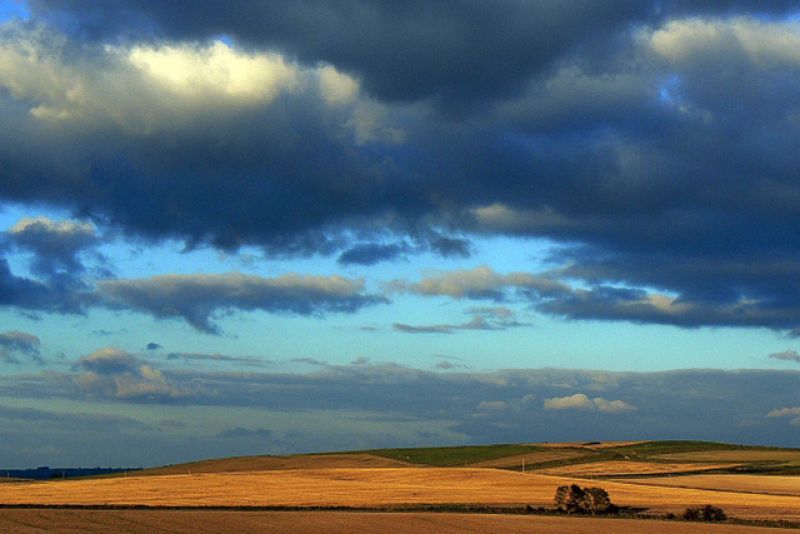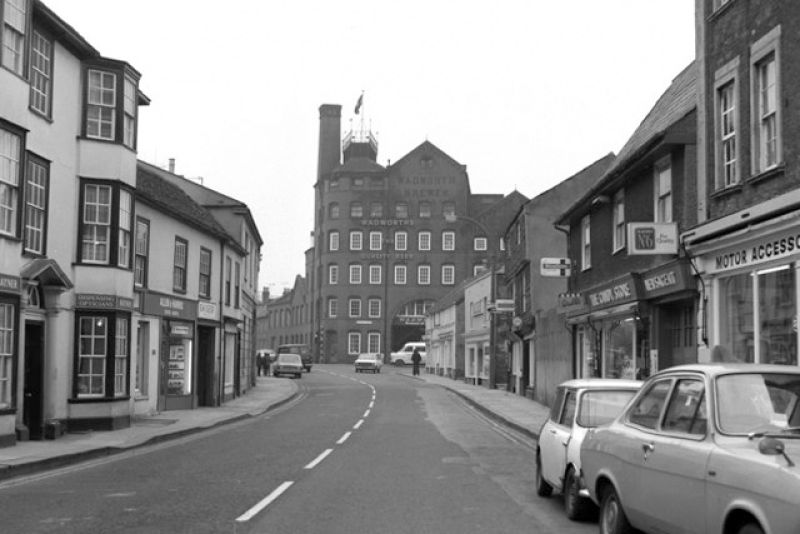Created Date:
Last Modified:
Castle Combe Race Circuit
One of the oldest circuits in Britain, with a history of more than 70 years of motorsport.
Location
Castle Combe Circuit, Chippenham, Wiltshire SN14 7EY.
Date
1950 - present.
-
 The Classic and Sports Car Club’s President’s Cup race for Marcos cars, Castle Combe, April 2011, © Kev Parsons…, via Flickr
The Classic and Sports Car Club’s President’s Cup race for Marcos cars, Castle Combe, April 2011, © Kev Parsons…, via Flickr -
 The cup presented by the Riley Motor Club to Kitty Lysley, as overall winner of the Cotswold Six, source: Illustrated Sporting and Dramatic News, 19th October 1932
The cup presented by the Riley Motor Club to Kitty Lysley, as overall winner of the Cotswold Six, source: Illustrated Sporting and Dramatic News, 19th October 1932 -
 The cup presented by the Riley Motor Club to Kitty Lysley, as overall winner of the Cotswold Six, source: Illustrated Sporting and Dramatic News, 19th October 1932
The cup presented by the Riley Motor Club to Kitty Lysley, as overall winner of the Cotswold Six, source: Illustrated Sporting and Dramatic News, 19th October 1932 -
 The paddock, at the first Castle Combe meeting open to the public, just before the start of the 500cc race, source: Autosport, 13th October 1950
The paddock, at the first Castle Combe meeting open to the public, just before the start of the 500cc race, source: Autosport, 13th October 1950 -
 The start of the 1100cc race, taken from the top of the control tower, the winner was Ken Wharton, Cooper-JAP, No. 52, © George Phillips, source: Autosport, 13th October 1950
The start of the 1100cc race, taken from the top of the control tower, the winner was Ken Wharton, Cooper-JAP, No. 52, © George Phillips, source: Autosport, 13th October 1950 -
 The paddock, at the first Castle Combe meeting open to the public, just before the start of the 500cc race, source: Autosport, 13th October 1950
The paddock, at the first Castle Combe meeting open to the public, just before the start of the 500cc race, source: Autosport, 13th October 1950 -
 The front cover shows the Aston Martin DBS/1, which was driven by Reg Parnell and Roy Salvadori in 24 hour race at Le Mans; with thanks to the Programmes Cover Project, www.progcovers.com
The front cover shows the Aston Martin DBS/1, which was driven by Reg Parnell and Roy Salvadori in 24 hour race at Le Mans; with thanks to the Programmes Cover Project, www.progcovers.com -
 Castle Combe Circuit and Kitty Maurice had close connections with Frazer Nash, and in the early 1950s, Kitty owned at least two of these cars. This is her 1951 Frazer Nash Drophead Coupé that she owned for a short while, photographed at the Jack O’Lantern Garage near Romsey in Hampshire, with possibly Kitty Maurice at the wheel, © Richard B Ford, Rick’s Classic Cars Photographs.
Castle Combe Circuit and Kitty Maurice had close connections with Frazer Nash, and in the early 1950s, Kitty owned at least two of these cars. This is her 1951 Frazer Nash Drophead Coupé that she owned for a short while, photographed at the Jack O’Lantern Garage near Romsey in Hampshire, with possibly Kitty Maurice at the wheel, © Richard B Ford, Rick’s Classic Cars Photographs. -
 Bought by Mrs Maurice in April 1955, this Frazer Nash Le Mans Coupé travelled to Le Mans that year as an official A.F.N support vehicle, and in 1959 took part in the 24-hour race, © el.guy.08¬¬_11, via Flickr
Bought by Mrs Maurice in April 1955, this Frazer Nash Le Mans Coupé travelled to Le Mans that year as an official A.F.N support vehicle, and in 1959 took part in the 24-hour race, © el.guy.08¬¬_11, via Flickr -
 Mini-Clubmans at the Leyland National Mini Championship, Castle Combe, 1977, © British Motor Industry Heritage Trust, source: www.motorgraphs.com
Mini-Clubmans at the Leyland National Mini Championship, Castle Combe, 1977, © British Motor Industry Heritage Trust, source: www.motorgraphs.com -
 An aerial view of the circuit, taken in 2005. The new chicanes can just be seen in the lower half of the picture: Bobbies on the left and The Esses on the right, © Kev Slade, via Flickr
An aerial view of the circuit, taken in 2005. The new chicanes can just be seen in the lower half of the picture: Bobbies on the left and The Esses on the right, © Kev Slade, via Flickr
Commentary
Like a number of other motor racing circuits in Britain, Castle Combe was created from an airfield perimeter track.
The airfield in question, RAF Castle Combe, was opened in 1941 as a training station with just the most basic facilities. A year later, it was upgraded with new training and accommodation buildings, and it was probably at this point that the control tower was built, which survives today as the circuit’s race control.
The perimeter track was laid in 1943 when, by this stage, two steel-mesh runways had been set into the airfield, together with seven portable blister aircraft hangars placed inside the perimeter track.
The last plane took off from Castle Combe in July 1945 and, between 1946 and 1948, the base became a re-settlement camp for Polish service personnel before they either returned to Poland, remained in Britain, or emigrated elsewhere.
The land on which the airfield stood had been requisitioned by the British Government under the Emergency Powers (Defence) Act 1940, and was part of a 2,230-acre estate bought by the Gorst family in 1867. It included the entire village of Castle Combe, which was even then described as “the prettiest village in England”. When Sir John Gorst died in 1916, the estate passed to his granddaughter, Katherine (known as Kitty), who at the time was just eleven years old.
A few months after she came of age, Kitty Gorst married William Lysley, formerly of the Eleventh Hussars. The wedding was a large affair, with the bride and groom reportedly receiving more than 200 presents. Kitty’s gift to William was a horse for hunting; he, in turn, gave her a two-seater Morris Cowley.
p>In the years immediately following her marriage Kitty was an active member of the Riley Motor Club. In 1933, she won the Sphere Cup in the Cotswold Six, Ladies Trial, “for the best performance in a six-cylinder Riley”. The following year, she drove in the Scottish and the 1,000-mile RAC rallies, and was the overall winner in the Cotswold Six. In 1937, she beat all comers in the Club’s winter trial, held at Wrotham in Kent. Over a period of almost ten years, she competed in a number of different cars, including a cream Riley Imp and a black and platinum grey Riley saloon.Kitty and William Lysley were divorced in 1936, and three years later, just before the outbreak of war, she married her estate manager, Robert Maurice.
Now known as Mrs Maurice, Kitty hit the headlines in 1947 when she announced the sale of the entire parish and village of Castle Combe. She had learnt that the local rural district council intended to classify most buildings in the village as being of historic or architectural interest, thereby placing a duty on her as owner to undertake a minimum standard of repairs and maintenance; something that had, apparently, been largely absent for many years. Failure to do so could result in prosecution.
The cost of this was presumably thought to be beyond her means and it was hoped that the whole village might be placed in the hands of the National Trust for safe-keeping; however, the asking price of £50,000 was said to be more than the Trust could pay. As a result, on 30th September 1947, the villagers of Castle Combe gathered in nearby Chippenham to witness the auctioning of their homes. These included: two pubs, two bakeries, two shops, the post office and about 34 cottages and houses. Although the Manor House failed to reach its reserve, almost all the remaining lots were sold, for a total of £39,000. Most of the land on the estate, including the airfield, remained in the trust that had been set up following Sir John Gorst’s death.
When the War came to an end in August 1945, it is said that the local Bristol Motor Club was the first club in the country to resume competition, holding a meeting that month at Naish Hill, near Portishead. Although further events took place on the disused airfield at Lulsgate (later to become Bristol Airport), the Club continued to look for a permanent venue. In early 1950, they approached Mrs Maurice requesting the use of the airfield at Castle Combe, a proposal to which she enthusiastically gave her support.
The first race meeting at Castle Combe took place on 8th July 1950. It was a relatively small affair, and for club members only. Eight races were arranged for the day; the first was a ten-lap event for motorcycles, and the remaining seven were five-lap races for sports cars, saloons, specials and 500cc Formula 3 single-seaters.
Amongst the competitors at this first event were Arthur Mallock (founder of race car manufacturer, Mallock Sports), Derek Buckler (of Buckler Cars), and Tony Crook (latterly owner of Bristol Cars).
The circuit was 1.9 miles in length and varied between 35 and 50 ft in width. The major corners and straights were given names largely derived from the circuit’s farming and military history: Camp, Quarry, Tower and Farm; names that are still in use today.
The first meeting open to the public was held three months later, on 7th October 1950. With a five shilling admission fee, plus five shillings for the car park, an estimated 12,000 spectators attended the event. There were seven categories of racing; practice was untimed, and grid positions decided by ballot, apart from the 500cc race, which was run over two heats.
With an entry list of around 110 cars, the starting grids read like a drivers’ Who’s Who. Peter Collins and Stirling Moss both drove Cooper-Nortons, Ken Wharton (Cooper-JAP 1100), and Bob Gerard, Brian Shawe-Taylor and Graham Whitehead were all in ERAs. Tony Crook and Sidney Allard drove in the sports car races, the latter at the wheel of one of his own cars.
Racing and work on the track and facilities continued the following year. The next public meeting was held in March 1951 at which a young Mike Hawthorn took two wins on just his second outing (the first being at Gamston, five days earlier).
However, tragedy struck at the last meeting of the year when Ron Dryden, a highly regarded and hugely experienced driver, crashed on the circuit, suffering fatal injuries.
In the following years, the popularity of the circuit steadily grew, drawing many well-known, drivers, including Stirling Moss, Roy Salvadori, Ken Tyrrell, Colin Chapman, and John Surtees, competing then at the motorcycle meetings. At the meeting in August 1954, 20,000 people packed the circuit, with a spectator grandstand in place for the first time.
However, the popularity of Castle Combe also brought a number of drawbacks. Offering well-known drivers an appearance fee certainly brought in the crowds, but large spectator numbers inevitably meant extra costs, and therefore diminished profits. Despite the efforts of an army of volunteers, which included Kitty Maurice herself, meetings made very little money, and sometimes ran at a loss.
The knockout blow came at the beginning of 1956 after the accident at Le Mans, the previous June, where more than 80 spectators had been killed when a Mercedes-Benz driven by Pierre Levegh plunged into the crowd. With Castle Combe already facing criticism for shortcomings in the way it had organised a recent event, the RAC decided that no further meetings could be held until additional safety measures were in place. Faced with costs that they would not be able to cover, the Bristol Motor Club, with great reluctance, terminated their lease of the circuit. Although car racing was no longer permitted at the track, motor cycle racing was largely unaffected, and continued as before. In 1957, the future motorcycle world champion and Formula One driver, Mike Hailwood, made his first appearance at Castle Combe.
Motor racing returned to the circuit in June 1962 after the British Sports Car Club covered the cost of building a protective banking around the track. However within a year competition was once again suspended over the condition of the track surface – a ruling that again did not apply to motor cycles.
As the 1963 season drew to a close, it was announced that Castle Combe would be managed by A.F.N, previously known as Frazer Nash Cars. The company’s former managing director, Harold J Aldington, was a personal friend of Kitty Thomas, as she was now known, having divorced Robert Maurice and married William Thomas in July 1956. Coincidentally, it seems that Kitty’s new husband (or Katherine as she then preferred to be known) also had connections with Frazer-Nash and Bristol.
Over the next three seasons, the number of race days at the track steadily grew, with 13 car meetings, and three for motorcycles, on the 1966 calendar. However, a small group of local residents were beginning to voice concern over the disruption and noise from the circuit. This eventually resulted in the local council placing limits on starting and finishing times, banning all racing on Sundays, and refusing to extend planning permission for the use of the circuit beyond the next three years.
In 1969, following further local objections, Anthony Greenwood, Minister for Housing and Local Government, stated that an alternative site should be found for the circuit when the current period of planning permission expired at the end of 1971.
Despite their best efforts, the volunteers and lawyers acting for Castle Combe were unable to overturn this decision. Nor were any of their compromise suggestions accepted. However, in June 1972, with the circuit already officially closed, permission was granted to run five race meetings a year, for a further three years.
In 1975, with the clock once again ticking down, Mrs Thomas asked Howard Strawford if he would be prepared to take on the job of running the circuit. Joining Castle Combe initially as competitions secretary, Howard Strawford had become a key figure in the track’s promotion and preservation. Following his appointment, planning permission to run the circuit for the next five years was obtained and agreement was reached for a new consortium, Castle Combe Circuit Ltd., to take over the management of the circuit from AFN. Despite this fresh start, many remained pessimistic about Castle Combe’s future, particularly in view of its precarious financial situation.
Turning a loss-making organisation into something more sustainable and profitable proved to be a slow process; but a new more professional, and entrepreneurial approach led to significant savings and a greater take-up of the circuit’s facilities. The money gained from this was ploughed back into spectator and track safety, which in turn increased the capacity of meetings – and overall profit.
Once again, the great and the good of motor sport were back racing at Castle Combe. In 1976, Denny Hulme and Ari Vatanen took part in four 12-lap races as part of the Texaco Tour of Britain; racing car constructor Adrian Reynard and future Formula 1 driver, Jonathan Palmer, drove in the British Racing and Sports Car Club meeting, and Nigel Mansell began to cut his teeth in Formula Ford.
It took another eight years before the future of the circuit became secure. During this time attending planning enquiries and challenging local planning decisions had become a way of life for Howard Strawford. In 1981, a public enquiry was held following concerns from a number of local residents, including Major Peter Phillips, father of Capt. Mark Philips, who at the time was married to Princess Anne. James Hunt was called as an expert witness, and it is believed that his support significantly contributed to the decision to grant permanent planning permission for ten race days per year. Security was finally assured in 1984 when Mrs Thomas offered to sell the freehold of the circuit to Castle Combe Circuit Ltd.
Over the next 20 years, the numbers of events slowly increased. Once again, many future stars lined up on the grid. In July 1982, Ayrton Senna broke the lap record on every one the 15 laps he raced in the Formula Ford 2000 Championship. In 1985, Damon Hill, Johnny Herbert, and Mark Blundell all competed on the track in Formula Ford 1600, as did David Coulthard, four years later in 1989.
In August 1998, a major accident led to the first significant change to the circuit design since Castle Combe first opened in 1950. During qualifying on August Bank Holiday Monday a TVR Tuscan suffered a suspension failure approaching Camp Corner, shedding a wheel in the process. Although the car spun into the barrier, the driver, Bobby Verdon-Roe, was unhurt. However, the detached wheel bounced over the banking and hit a spectator, Lee Noble, who suffered major injuries, and died.
Shortly afterwards, it was announced that two new sections would be added to the circuit in order to reduce track speeds. The Esses (named after Howard Strawford) and Bobbies (after Bob Giles, a long-standing member of the circuit management team) reduced entry speeds into Old Paddock and Camp Corner, and added about five seconds to overall lap times.
Despite lower track speeds, the circuit remained as popular as ever; possibly more so, with the new sections giving spectators two further vantage points.
In 2001, the British GT Championship and British Formula 3 visited Castle Combe. Although the racing was judged to be a great success, there was again local opposition to some of the larger events, and in 2004 race organisers were served with a noise abatement order. Despite an appeal by the circuit management, the last of the British GT and Formula 3 meetings were held in in June 2005.
Howard Strawford died in February 2013; but the circuit has remained in independent hands, and members of his family are still involved in the organisation. Today (2022) Castle Combe hosts Formula Ford 1600 saloon and GT racing, classic sports car events, plus motor cycle and cycle racing, track days, and numerous other club and one-off events.
Further details
• Castle Combe Circuit, the first 60 years, Paul Lawrence and Peter Stowe, TFM Publishing, 2010.
• Castle Combe Circuit website: https://castlecombecircuit.co.uk.
• Motorsport Explorer, Julian Hunt, Haynes Publishing, 2012.
• Motor Racing Circuits in England, Peter Swinger, Ian Allan Publishing, 2001.













